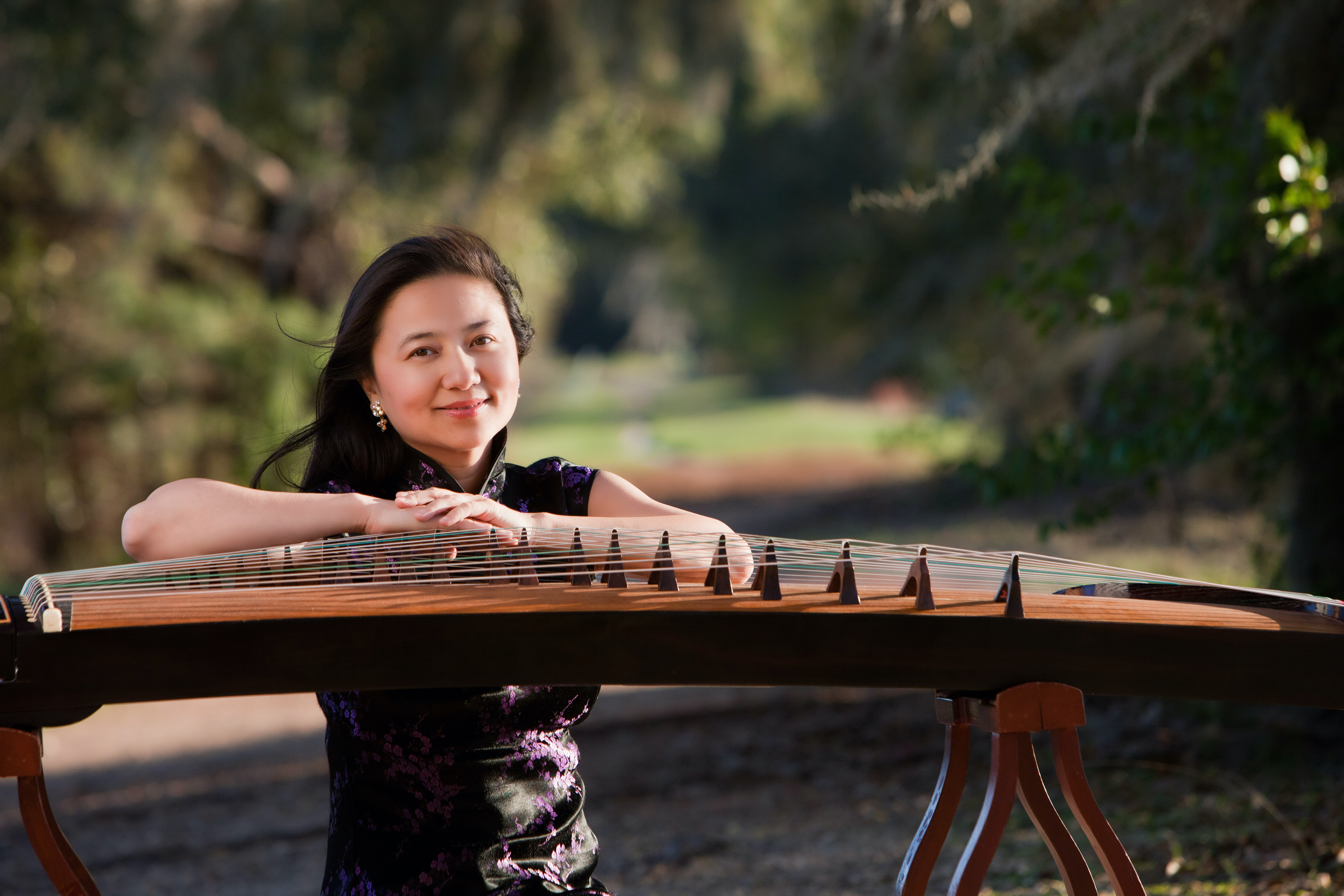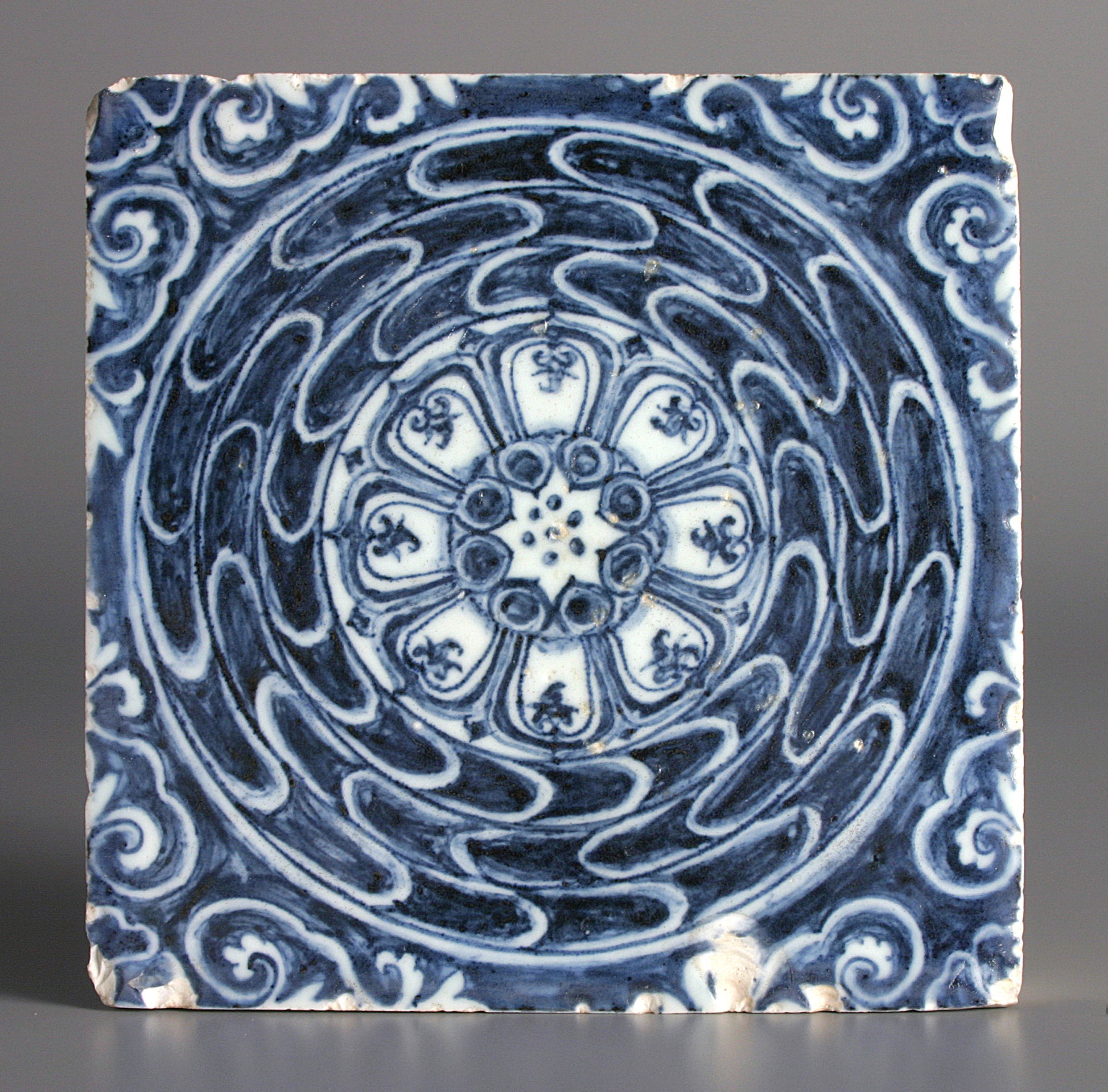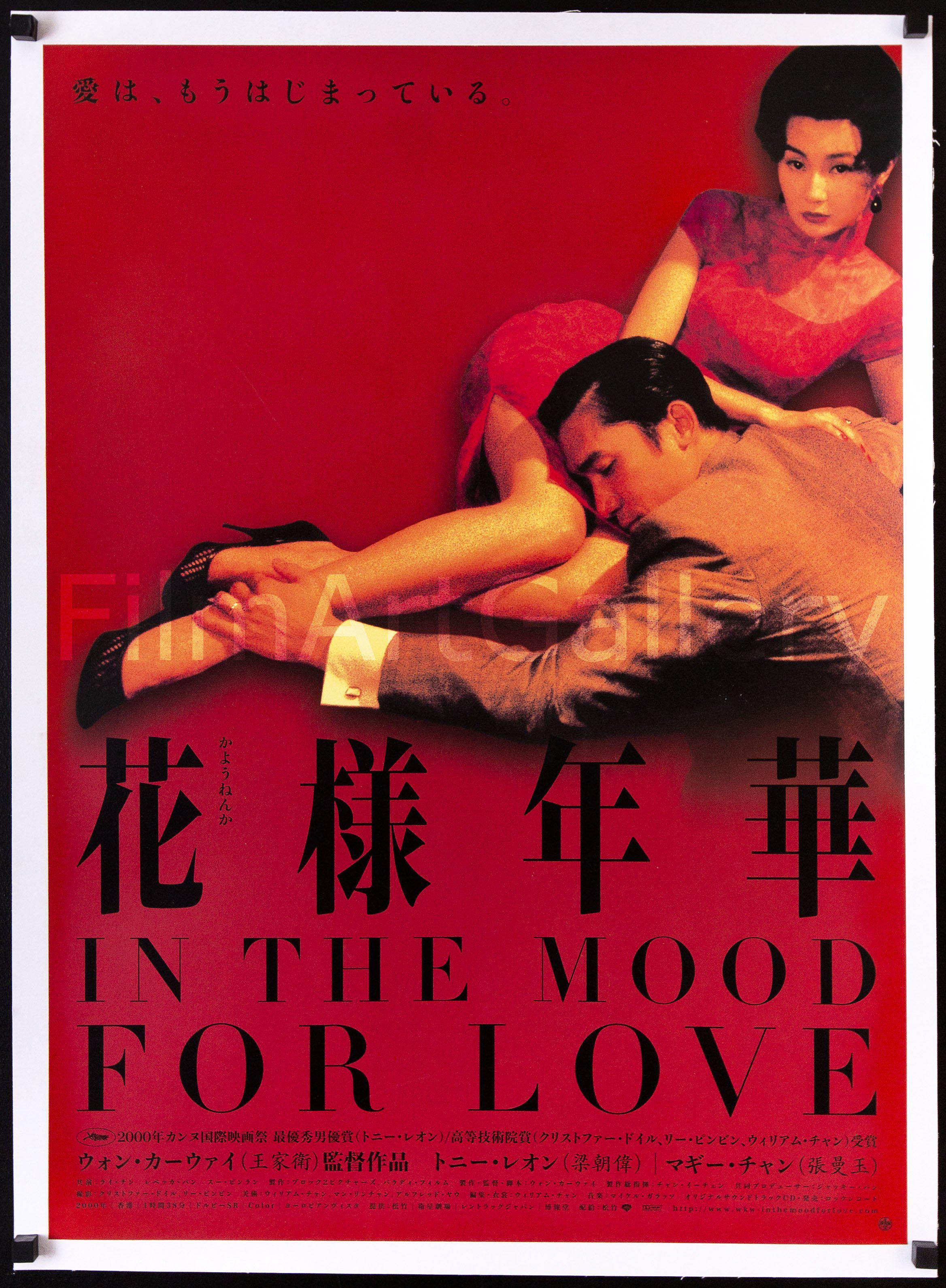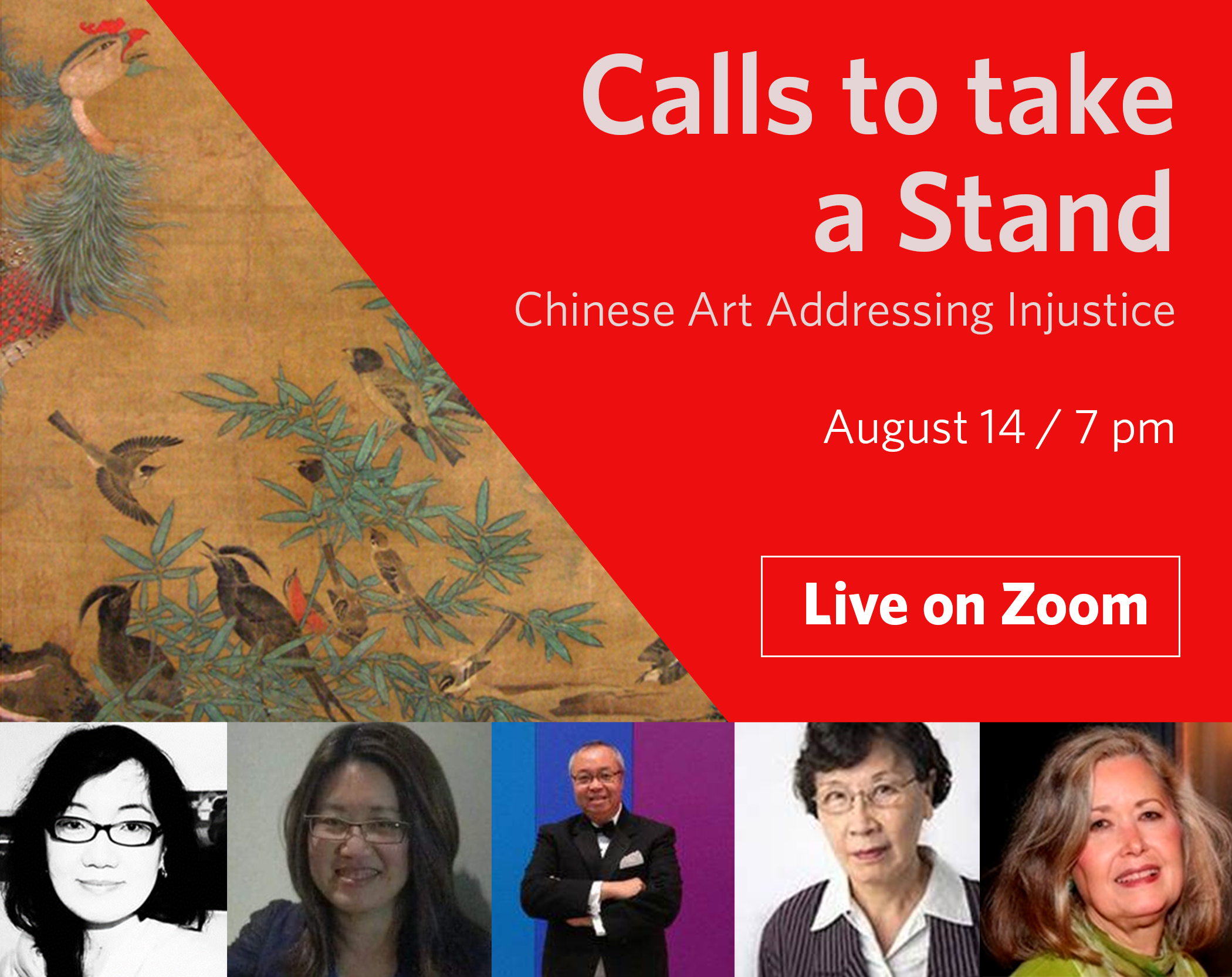The August edition of Art After Dark celebrates the museum’s collection of Chinese art.
Join a panel of curators and historians of Chinese art as they discuss works of art created to encourage a stand against injustice. Panelists include Joy Lidu Yi, Associate Professor and Curator of Chinese Art and Archaeology at Florida International University, Amelia Chau, Adjunct Curator of Asian Art at the Crocker Art Museum, Philip Hu, Curator of Asian Art at the Saint Louis Art Museum, and Hou-mei Sung, Curator of East Asian Art at the Cincinnati Art Museum. The event is hosted and moderated by Laurie Barnes, the Norton's Elizabeth B. McGraw Curator of Chinese Art.
The Museum welcomes back Haiqiong Deng, a master performer of the traditional Chinese instrument zheng (or guzheng), as she presents a concert of classical Chinese music. Collection Insights highlight a porcelain tile with a lotus design made 600 years ago during the Xuande reign of the Ming Dynasty.
ICYMI catch the July lineup here!
Calls to Take a Stand: Chinese Art Addressing Injustice
Recorded live panel discussion
A panel of curators and historians of Chinese art discuss works of art created to encourage a stand against injustice. The audience is invited to submit questions for the panelists to discuss following the presentation.
Panelists include Lidu Yi, Amelia Chau, Philip Hu and Hou-mei Sung, and the event is hosted and moderated by Laurie Barnes, the Norton's Elizabeth B. McGraw Curator of Chinese Art.
Concert From Home
Haiqiong Deng
Haiqiong Deng is a master performer on the traditional Chinese instruments the guzheng (21-string zither) and guqin (7-string zither). She was the recipient of the Florida Folk Heritage Award (2017), the Florida Individual Artist Fellowship (2013) and the Master Artist of the Florida Folklife Apprenticeship Award (2012). She was also the winner of the Outstanding Performance Prize at the Chinese National Zheng Competition in Shanghai 1995.
For more information:
Find Haiqiong Deng online at www.haiqiongmusic.com, on YouTube at Haiqiong Music, and on Facebook at Haiqiong Deng.
To support this artist:
Listen and watch Haiqiong Deng music on YouTube and don’t forget to subscribe to “Haiqiong Music” on YouTube!
 Photo Courtesy of the Artist
Photo Courtesy of the Artist
Learn More About Haiqiong
As an internationally renowned soloist and chamber musician, Haiqiong has given numerous performances and lectures at concert halls, universities, museums, and festivals throughout the United States, Canada, China, Japan, and Singapore. Her discography ranges from solo and ensemble to concerto and cross-cultural works released by Sony BMG, BIS, Delos International, Capstone Records, Tribal Record, and Celebrity Music. Both of her CDs, "Mountain, Water, Sentiments - Traditional Chinese Zheng Masterpieces Performance by Haiqiong Deng” and "Echoes of Strings - Classical Indian Music by Sitar and Zheng" were nominated for the 13th Annual Independent Music Awards in the "World Traditional" Category in 2014. She is also the featured artist in the chapter on Chinese music in the popular textbook World Music: Traditions and Transformations (McGraw-Hill, 2007), by Michael B. Bakan.
Haiqiong received her Bachelor of Music from the Shanghai Conservatory of Music and Master of Arts in Arts Administration and Ethnomusicology, and Ph.D. in Musicology from Florida State University. She has been the Director of the FSU Chinese Music Ensemble since 2001.
Collection Insights
By Laurie Barnes, Elizabeth B. McGraw Curator of Chinese Art

Square Floor Tile with a Lotus Design, 1426–1435
Ming Dynasty, Xuande Reign
Porcelain with underglaze cobalt-blue decoration, made at the Xuande Imperial Kiln, Zhushan, Jingdezhen, Jiangxi Province, 9 1/8 x 9 1/4 x 1 5/16 in (23.2 x 23.5 x 3.3 cm)
Purchase, acquired through the generosity of the Eva and Eric Weinberger Fund for Chinese Art, 2006.40
"One of the first works of art that I recommended the Norton acquire when I arrived at the museum in 2006 is this blue and white porcelain floor tile made almost 600 years ago. Pictorial tiles have embellished Chinese palaces, shrines, stately residences, temples, and tombs for more than 2,000 years. This tile was made at the imperial kiln of the Xuande Emperor who reigned 1426–1435. Since I have spent most of my life appreciating fine Chinese ceramics, I was excited when fragments of tiles like this one were excavated at the site of the Xuande imperial kiln in 1993.
This tile was made adhering to the decree of the Xuande Emperor’s great grandfather, the Hongwu Emperor who founded the Ming dynasty, that earlier Tang dynasty architecture should serve as the model for Ming imperial architecture. As such, molded stoneware tiles from the main Tang dynasty palace in Chang’an (now Xi’an) served as the prototype for this tile’s design. The Tang and Ming tiles feature similar motifs of a large central lotus blossom surrounded by undulating lines representing water. Lotus flowers are important Buddhist symbols because they grow from mud and murky water, representing desire and attachment, and bloom pure and pristine, signifying spiritual awakening.
This tile was made adhering to the decree of the Xuande Emperor’s great grandfather, the Hongwu Emperor who founded the Ming dynasty, that earlier Tang dynasty architecture should serve as the model for Ming imperial architecture. As such, molded stoneware tiles from the main Tang dynasty palace in Chang’an (now Xi’an) served as the prototype for this tile’s design. The Tang and Ming tiles feature similar motifs of a large central lotus blossom surrounded by undulating lines representing water. Lotus flowers are important Buddhist symbols because they grow from mud and murky water, representing desire and attachment, and bloom pure and pristine, signifying spiritual awakening. Shakyamuni Buddha said: “ As a lotus flower is born in water, grows in water and rises out of water to stand above it unsoiled, so I, born in the world, raised in the world, having overcome the world, live unsoiled by the world.” A legend about Shakyamuni Buddha’s birth recounts that he walked seven steps in the four cardinal directions, and at each step a pure and beautiful lotus blossom appeared.
In the 1300s and early 1400s the cobalt blue pigment used to decorate this tile came from regions now in Iran and Afghanistan. Rulers in this part of the world were desirous of obtaining newly developed Chinese blue and white porcelain. At the time this tile was made Shah Rukh (1377 – 1447, the son of Timur, also known as Tamerlane, and great patron of the arts) ruled the Timurid Empire from Herat, which is now in Afghanistan. Chinese treasure ships traveled to the port of Hormuz on the Persian Gulf carrying blue and white porcelain. Timurid envoys visited China bringing cobalt ore, which at the time was more valuable than gold and used r decorating Chinese imperial porcelain. Timurid ambassadors returned with gifts of Chinese blue and white porcelain."
-Laurie Barnes, Elizabeth B. McGraw Curator of Chinese Art
Check out this video by the Smithsonian Porcelain For Emperors to learn more about the history of porcelain production in Jingdezhen.
Film Favorite
Norton Volunteer Catherine Lu tells us why she picked X as this month’s film favorite!
I do think about one Chinese film that I really want to introduce to my American friends, "In the Mood for Love."
This film was directed by a very famous Hong Kong director Wong Kai-Wai in year 2000, which premiered at Cannes 20 years ago, is lauded for its tight plot, pitch-perfect score, brilliant cinematography and award-winning performances. The two main actors are both well-known in whole Asia. This film is also very famous for the 20 cheongsams (the style of the main actress's outfits), they reflected the fashion designs in Hong Kong in 1960's.
I don't remember how many times that I have watched this movie, but one thing I am pretty sure is that every time I watch it, I deepen my love for it. I am highly recommending this movie to you. Hope you like it also!

In the Mood for Love is available to stream via Amazon Prime Video and on Kanopy. You can see the film trailer here.
